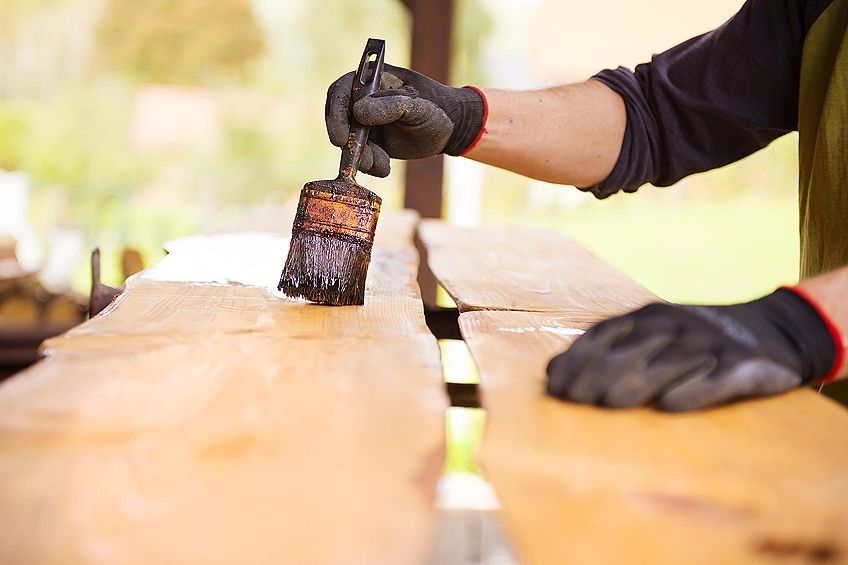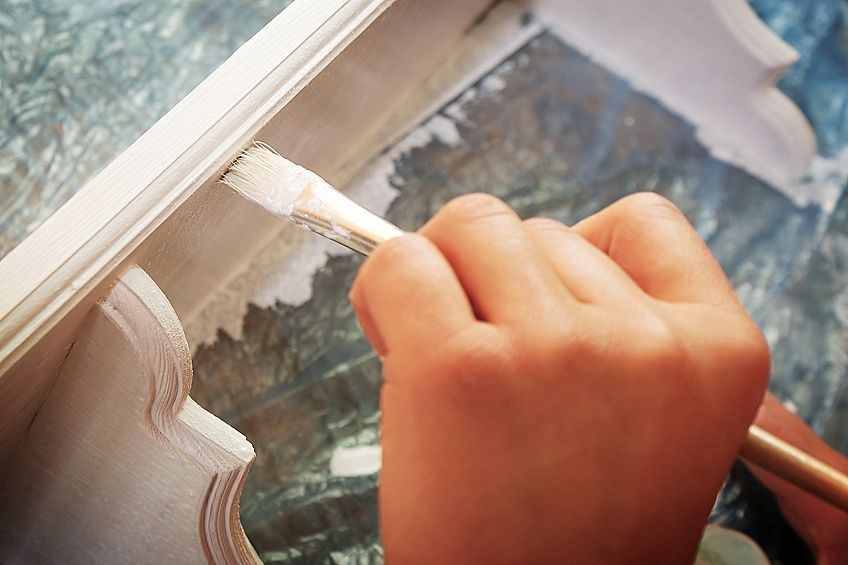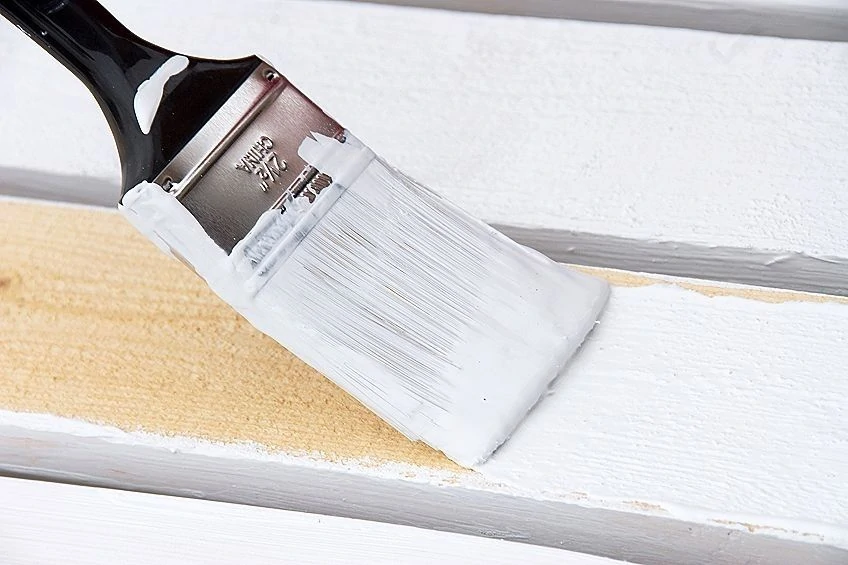Best Wood Primer – How to Find the Best Primer for Your Project
This post may contain affiliate links. We may earn a small commission from purchases made through them, at no additional cost to you. You help to support resin-expert.com
You can apply wood primer to wood as a sealant to smooth, and seal the wood, while also allowing you to provide adhesion for the paint to be applied to the wood. If you do not use a primer your project would look shabby, and it can be much less durable and long-lasting. If you plan to paint wood, you have to use a wood primer first to make sure that you achieve great results. Follow our guide below on the best wood primer to make sure that you choose the right primer for your application.
Table of Contents
What is Wood Primer?
Used under the layer of paint as a base, wood primer is important to use on the wooden surface to protect it. Your paint will adhere to the wooden surface better thanks to the base layer. This will help the paint last longer on the wood, and create a stronger layer of adhesion.
To protect both indoor and outdoor items, use an oil-based wood primer. This will offer a protective layer that seals the wood and stops the natural acidic tannins from seeping into the wood. Certain woods such as cedar or redwood have quite high levels of tannins. There is an assortment of wood primers available, each with individual characteristics to deal with specific purposes.
Moisture-Diffusion Barrier Primers
CPES (Clear Penetrating Epoxy Sealer) creates a sealant against water, but still allows the water to evaporate. This is a very effective sealer of wood surfaces. It will stop wood from rotting and ensure water does not collect on the wood’s surfaces, this is possible as it allows for water vapor to pass, but stops the passage of liquid water.
Adhesion Sealer
This primer prepares the wood well for the layer of paint to be applied over it, it adheres well to the wood’s surface. This helps to create a stronger bond for the paint to be applied over.
Porosity-Sealing Primer
Wood surfaces have microscopic spaces between the fibers, as they have microscopic porosity. These spaces need to be smoothed out and filled. You can use a porous primer to fill these spaces and smooth them out, while also allowing you to seal the wood’s surface, before applying paint.
Combination Primers
CPES (Clear Penetrating Epoxy Sealer) stop any bleeding or staining, offers a sealant layer to the wood, and gives a strong foundation for the paint to adhere to the wood, making it a multi-purpose primer. This is good for stained or exterior wood.
Sanding Primers
By gluing the pieces of wood together this primer ensures the wood is even and smooth – perfect for a fresh layer of paint. Once the initial layer of CPES has dried, you can apply a layer of epoxy filler, and the following day you can sand off the wood. A final coat of CPES can be applied as a sealant, offering you the ideal foundation for you to apply paint onto.
The Difference Between Primer and Paint Explained
Primer has resin in it which is able to seal up porous wood surfaces. This then gives you a great foundation for you to apply the top layer of paint. Paint is made up of resin pigments, which gives it color. Primer has many positive attributes:
- Wood primer stops peeling and cracking of the paint from happening, and increases the overall quality of the paint
- The primer provides you with a smooth finished surface to apply your paint on, ensuring an even finished paint job. If you do not use a primer you might end up seeing the patterns of the wood through the finished paint
- You are able to neutralize the color of the wood by using a primer, allowing the color of the paint to come out even more so
- Wood primers tend to dry relatively quickly
- By applying primer, you will ensure the paint lasts longer
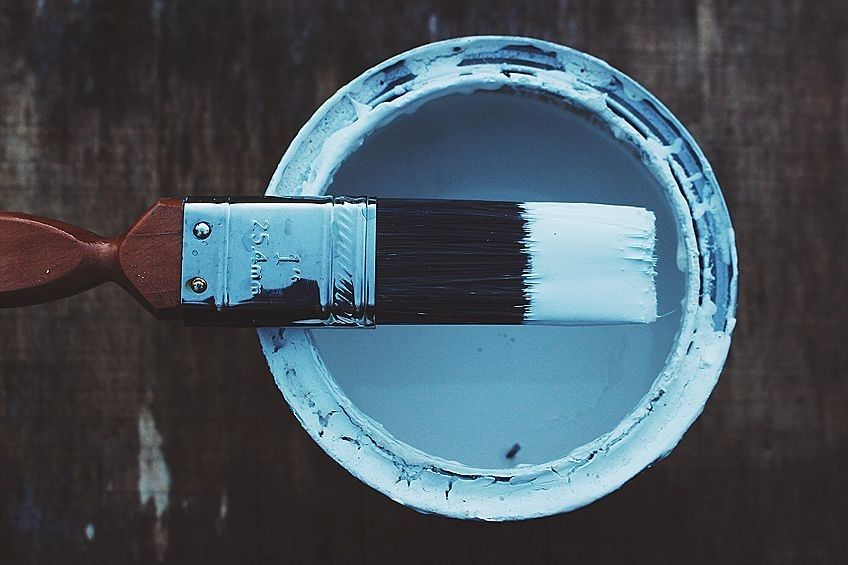
The Best Wood Primer
There is an assortment of top-quality wood primers available to buy, but this can make it hard to choose the best wood primer for you. To help determine which is the best wood primer for your project, we have identified a few of the top products and brands available.
Best Exterior Wood Primer: RUST-OLEUM Zinsser Bull’s Eye 1-2-3 Primer
This is a popular product, and is our top pick as the best exterior wood primer. However, the primer is also suitable for indoor use. The product is both a sealer and a primer and can be used on an assortment of surfaces. The primer has a water-based consistency and provides great adhesion to surfaces, it works well with latex or oil-based topcoat paints.
This primer is unique in that it greatly decreases the chance of fungus and mildew growing on the wood, it is also resistant to rust and stops the wood’s tannins from seeping into the newly applied coat of paint. Most surfaces can have this primer applied, without it needing to be sanding down first. The primer can be purchased in a spray can which allows you to reach the more difficult surface areas.
- A primer that can seal stains, graffiti, and tannin bleed
- Perfect for interior and exterior surfaces
- A versatile, water-based primer
Pros
- Can be applied to concrete and other high-pH surfaces
- Can be used indoors and outdoors
- Can cover up to 100 square feet
- Adheres to most surfaces
- Prevents blisters from forming on the wood’s surface
- Stops growth of mildew and mold
- Only requires soap and water solution to be cleaned
Cons
- You will need to apply several coats
Premium Choice: KILZ Adhesion High-Bonding Primer/Sealer
This is a latex-based primer that is highly regarded by many satisfied customers. This wood primer adheres to an assortment of surfaces, in particular those which are thought to be hard to paint. This particular primer bonds well to the wood surface and is ideal for use on old wood, it ensures that the paint does not bleed into the wood and assists that you will achieve your desired results.
This primer can be used on both exterior and interior surfaces and works well with the majority of topcoats available. The primer has a water-like consistency and is smooth, this offers a blended appearance when it is applied under a coat of paint. Always ensure your wooden surface has been properly cleaned and prepared before applying the primer, you can use a roller, brush, or spray to apply the product. It will take only 30 minutes for the primer to become dry to the touch, and after an hour you will be able to apply the next coat.
- A high-adhesion primer that bonds to most tough surfaces
- Can be used on most interior and exterior surfaces
- Reduces the need for sanding
Pros
- Offers a great blended appearance
- Dries quickly
- Works well on surfaces that are considered hard to paint
- Cost-effective
- Can be used on both exterior and interior surfaces
- Durable and long-lasting
Cons
- The thin consistency can be tricky to apply
Overall Best Wood Primer: KILZ Premium High-Hide Stain Blocking Primer
If you are working with bare wood, this is the ideal primer, as it will add to achieving a smooth finish by filling up the crevices in the wood. It offers a great base layer, should you wish to paint over it, as it adheres to the wood with ease. This primer can also be applied over or under oil or latex-based paints, but it is imperative to ensure your surface has been prepared sufficiently first.
A great attribute of this product is it successfully hides and blocks old colors, light to medium stains, and an assortment of other imperfections on the surface. The primer can be used on both outdoor and indoor surfaces and is ideal for humid areas like laundry rooms or bathrooms.
No volatile organic compounds (VOCs) are given off, and little to no odor is given off. This means it is safe to use in homes and other spaces that are occupied. To clean the product you need to simply use soap and water.
- A powerful stain-blocking water-based primer
- It also works as an effective sealer over various surfaces
- Provides excellent adhesion qualities to various materials
Pros
- No volatile organic compounds are given off
- Smooths out uneven surfaces
- Protects against damage from mildew and mold
- Adheres well to many different surfaces
- Offers large coverage
- Offers the ideal base for paint recoloring
- Ideal for both exterior and interior wooden surfaces
Cons
- Doesnt work as well over very dark stains
How to Choose the Best Wood Primer
Different types of wood, require different types of primers. To determine which primer to use, you will need to take into consideration the quality of the wood, the type of wood you will be applying the primer onto, and the surrounding environment (i.e. outdoor or indoor surface). Take these aspects into consideration:
- Water-based primer gives off a minimal odor, and normally contain only very little, or no VOC’s. Water-based primers are ideal to ensure you don’t get stains from ink, grease, and crayons. To achieve the best color, try tinting the primer to get it a shade that is similar to the topcoat paint layer.
- To block out external odors resulting from water, smoke, and nicotine, you can use oil-based primers. Keep in mind that oil-based primers do give off their own strong odor when working with them.
- If you are working with wood such as redwood or cedar, or any other outdoor wood that is known to stain, you can use an oil-based stain blocker. This product will stop the paint from bleeding into the wood surface. Use an oil-based topcoat, or alternatively an acrylic- or latex-based topcoat which can be applied over a water-based or oil-based primer. Check out the best exterior primer paint reviews for more information on this.
- If you are looking to achieve a durable, strong finish, use oil-based primers. These primers mask imperfections on the wood more efficiently than water-based primers, you won’t have to sand down any dips and bumps on the wood’s surface. This is generally the best exterior wood primer.
- If you have old paintwork that has not peeled or chipped, you can use an oil-based primer over it. The oil-based primer will adhere to the old paint and provide you a smooth surface for your fresh coat of paint. Keep in mind that the oil-based primer will take longer to dry than the water- or shellac-based products, these can dry quicker but can crack with ease and are quite brittle.
- If you are tackling a drywall job, you can use a standard primer, but to ensure you cover any inconsistencies on the wall’s surface, we recommend you use a thicker primer. Often the best exterior primer should be used for this kind of application.
- Check the product specifications for each type of primer. The best exterior primer for old wood is different to the best primer for bare wood or interior use. Make sure to buy the right product for your needs. Looking at the best exterior primer paint reviews will help you to better understand this.
- Use a wood primer to cover blemishes on the surface of the wood. Ensuring you have an even finish that is a great foundation to paint on. The best primer for bare wood should provide a good amount of hide and even tone.
- Use a primer that creates a sealant layer in areas that may receive moisture damage (like the kitchen or the bathroom) as it will decrease the chance of mildew growth. Before you apply the layer of primer to seal the wood, use a strong bleach-water solution to remove any existing mildew and mold.
- Exterior wood surfaces require a primer to ensure the paintwork lasts longer. We recommend you buy the same brand primer and paint. Use an acrylic-based product and ensure the surface is dry and clean before applying, and that the surface is not glossy. Be sure to buy the best exterior primer when working outdoors. The best exterior primer for old wood needs to be particularly durable and weather resistant.
- Use a tinted primer if you are looking to completely change the color. Tint your primer a shade of grey to achieve the best top paint color, this will cover the old paint color as well as any inconsistencies on the surface below.
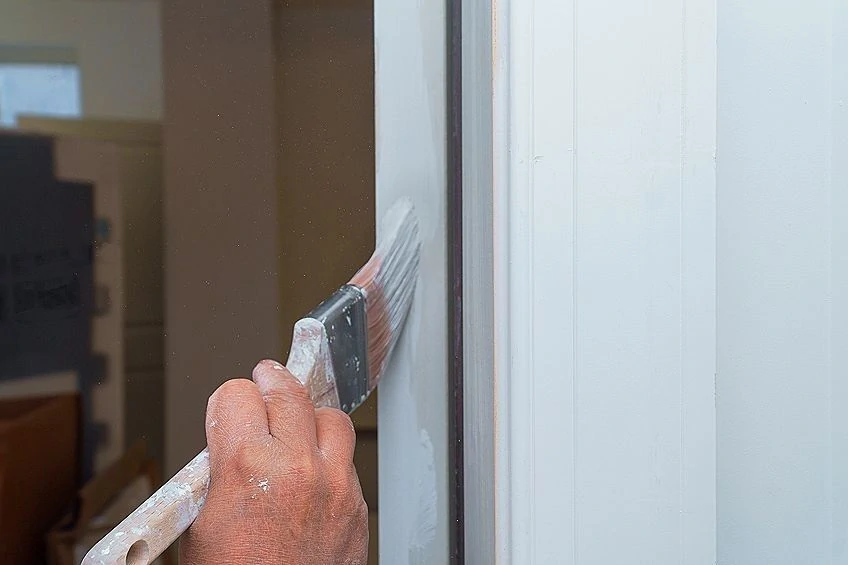
Choosing Between Paint or Paint with Primer
Most of the time it is best to apply your primer and paint separately, as each product offers its own unique characteristics. Primer offers a layer that seals and protects the wood. This offers a foundation to apply the paint over and allows the paint to adhere to the surface, and deter any stains forming on the surface of the wood. While paint offers shine, color, and protection from any external elements that could potentially damage the wood.
If your surface has an old layer of paint on it, then you can use paint that has a primer in it. In most cases though, it is best to use a separate primer before applying your coat of paint on top of it. If your surface is tiles, glass, PVC (polymerizing vinyl chloride), or other smooth surfaces it will be necessary to utilize a primer that has bonding agents, this will ensure the paint will then adhere to the surface. In this case, a primer and paint combination product would not be sufficient to ensure the paint sticks to the surface.
If you wish to stop stains from forming on the wood’s surface, you will have to use a stain-blocking primer. If you are looking to mask smells you can use a shellac primer. A paint and primer combination substance can not stop stains from seeping through to the surface of the wood. The best exterior primer needs to be durable and weather-resistant.
Frequently Asked Questions
Can You Use any Paint With Any Primer?
Unfortunately not. There is normally a correlation between the types of primer and types of paint which work together. As a general rule, the best wood primer should have its base (oil or water) match the paint it is being used with.
Is it Necessary to Apply Primer Before Painting?
We strongly suggest you use a primer before you begin applying your coats of paint. Particularly because the dark color of the wood often shows through to the paint layer without primer. This is also important for improving the adhesion of the paint to the surface.
Can White Paint be Used as a Primer?
While white paint may stop the color of the wood from coming through, it does not ensure the surface is smooth, or seal the wood, as a primer does. Rather use a white primer.
How Long Does Primer Take to Dry?
On average it takes four hours for oil-based primers to fully dry. A water-based primer on the other hand dries slightly faster, so this is a great option if you have a limited time frame to tackle your project. This changes depending on the manufacturer and temperature.
Which Type of Brush Should I Use?
A synthetic bristle brush is your best option, but to be honest any type of brush is fine. Rollers will help to achieve the best smooth, even finish. You can also spray on primers.
How Many Layers of Wood Deck Primer Is Required?
This depends on the primer used and the wood it is coating. On average you will require two coats, but if it is a thin primer you may require more. Outdoor projects will naturally need more coats than an indoor project, you should also take the type of wood into consideration when determining the amount of primer needed.
How Does One Apply Wood Primer?
Ensure your wooden surface is completely clean, with no debris, dirt, or dust, once done you can apply the first layer and allow it to dry sufficiently. It may be necessary to sand down the layer you have applied, should there be any irregularities, sanding it down will provide a smoother surface to work on. You can then apply the second coat of primer.
Can Watered-Down Paint be Used as a Primer?
Watered-down paint is referred to as a mist coat. By doing this, the watering down of the paint ensures the initial layer adheres well to the wood’s surface. While this may work, we recommend you rather use a primer as it is hassle-free and will save you time over using a mist coat. Primer is also more durable.
Can You Use Primer as the Finished Coat of Paint?
Unfortunately using a primer as the final coat, will breakdown, so you should rather use paint. Primer also does not look as attractive as paint does.
Are Undercoat and Primer the Same?
While a primer can be known as an undercoat, not all undercoats are primers.
Must Primer be Applied to Varnished Wood Before Painting?
Some primers can adhere to varnished wood while others can only be used on bare or exposed wood. Be sure to check the product guidelines on this.
Where Can You Purchase Wood Primer?
You will find a primer on Amazon, or at most home improvement stores. The best wood primer is often bought online, as this allows you to choose the exact product for your needs.
Finding the best wood primer is necessary for many painting and DIY jobs. Whether interior or exterior wood primer, the fundamentals are the same. Follow our guide above to help you find the perfect product, and better understand what is required from the best wood primer for your project. Happy painting!


